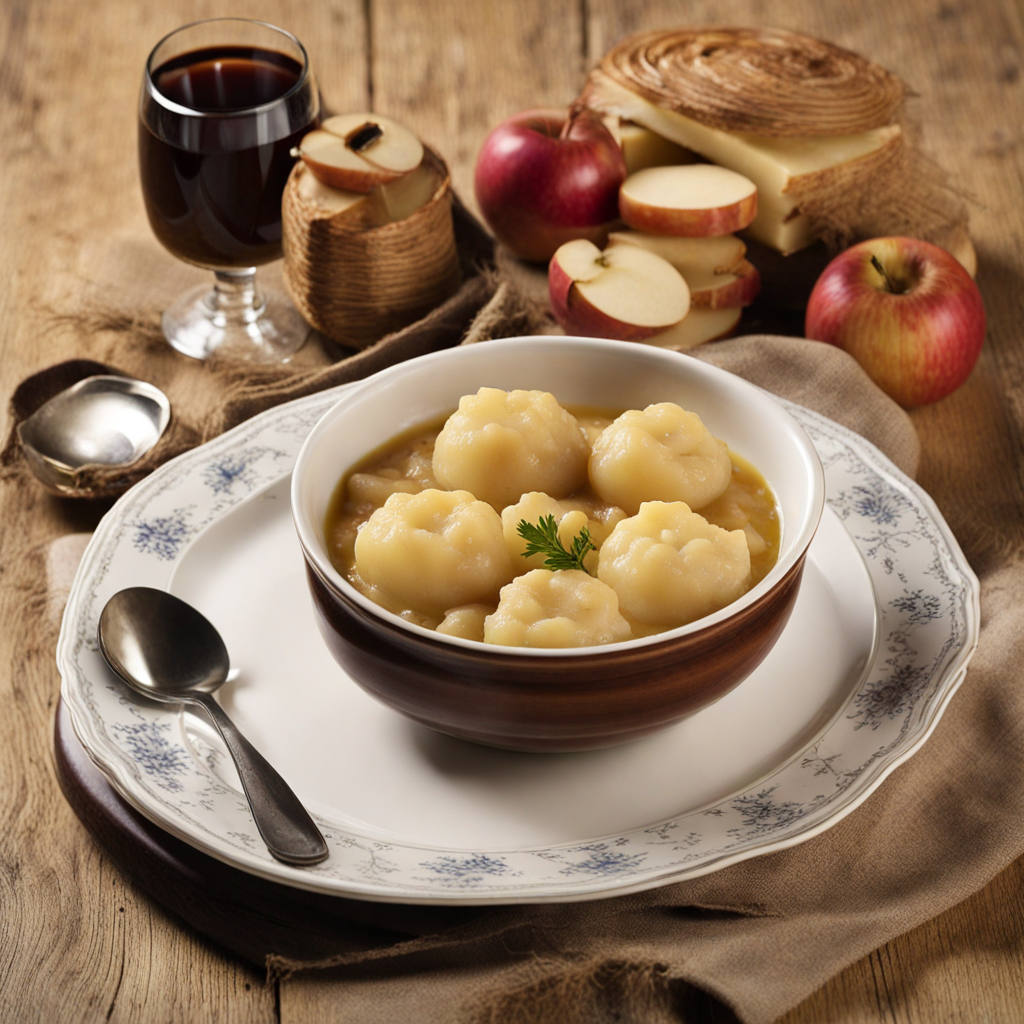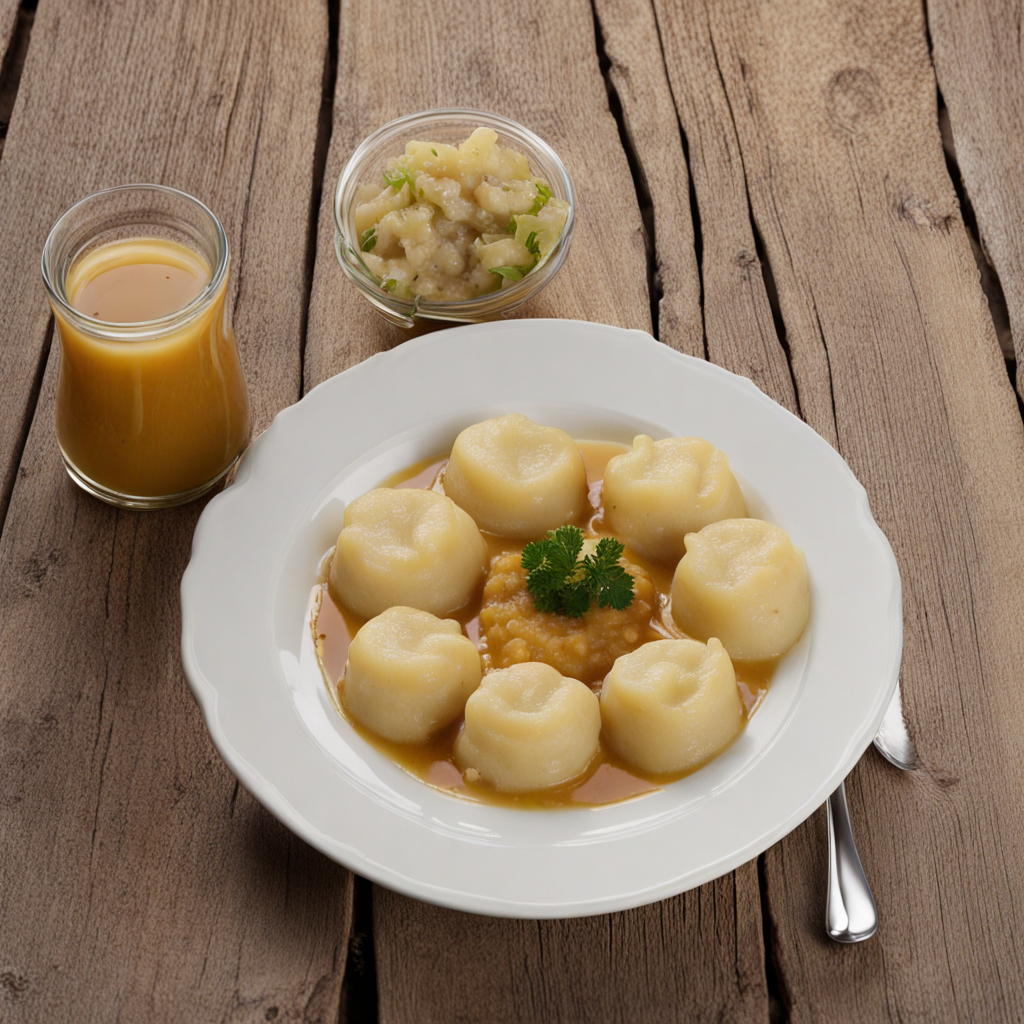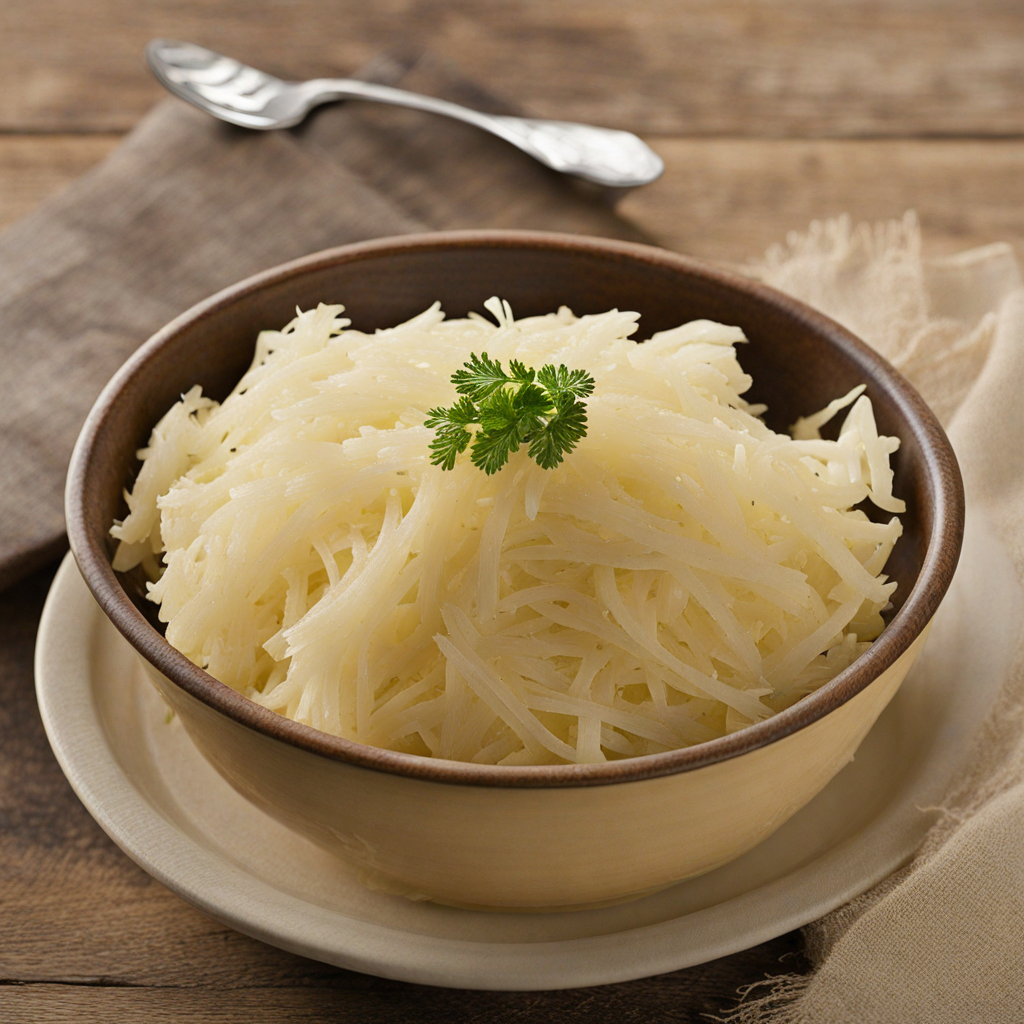Käsknöpfle
Käsknöpfle is a delightful dish hailing from the picturesque landscapes of Liechtenstein, embodying the essence of comfort food. This traditional dish consists of small, soft dumplings made from flour, eggs, and water, which are often likened to a type of pasta. The dough is typically pushed through a colander or a special press, resulting in little knöpfle that are perfect for capturing flavors. The texture is light and slightly chewy, making each bite a satisfying experience, especially when paired with the right accompaniments. What truly sets Käsknöpfle apart is its rich and creamy cheese sauce, usually made from a blend of local cheeses such as Emmental and Appenzeller. The dumplings are folded into this luscious sauce, allowing each piece to soak up the cheesy goodness, creating a harmonious blend of flavors that is both savory and indulgent. Often, the dish is topped with crispy onions or accompanied by a side of applesauce, providing a perfect contrast with the richness of the cheese and enhancing the overall flavor profile. As you savor Käsknöpfle, you'll find that it embodies the simple yet profound culinary traditions of Liechtenstein. Each bite transports you to the charming Alps, where the rustic flavors and hearty ingredients reflect the country's rich agricultural heritage. It’s a dish that not only warms the belly but also brings a sense of nostalgia, reminding you of home-cooked meals shared with loved ones. Whether enjoyed as a main course or a delightful side, Käsknöpfle is a must-try for anyone looking to explore the comforting flavors of Liechtenstein.
How It Became This Dish
Käsknöpfle: A Culinary Gem of Liechtenstein Nestled between Switzerland and Austria, the small principality of Liechtenstein is often overshadowed by its larger neighbors. However, it boasts a rich cultural heritage, particularly in its culinary traditions. Among the most beloved dishes in Liechtenstein is Käsknöpfle, a hearty cheese dumpling that embodies the flavors and traditions of the region. This dish not only serves as a representation of Liechtenstein's cuisine but also reflects the historical and cultural influences that have shaped it over centuries. #### Origins of Käsknöpfle Käsknöpfle has its roots in the Alpine regions of Central Europe, where the geography and climate have historically favored dairy farming and the production of cheese. The origins of the dish can be traced back to the medieval period, when farmers sought practical, nourishing meals that could sustain them during long, labor-intensive days in the fields. The use of local ingredients—such as flour, eggs, and cheese—was essential, as these were readily available. The name "Käsknöpfle" itself reveals much about the dish. "Käse" means cheese in German, while "Knöpfle" translates to "buttons" or "little knobs," referring to the dumpling's shape. This name encapsulates the essence of the dish: small, cheese-laden dumplings that are both comforting and satisfying. While Käsknöpfle is closely associated with Liechtenstein, its variations can be found across the Alpine region, particularly in Switzerland and Austria. It is believed that the dish evolved from the broader tradition of making dumplings in these mountainous regions, which were influenced by the availability of ingredients, local customs, and even trade routes that allowed for cultural exchange. #### Cultural Significance Käsknöpfle is more than just a dish; it is a symbol of community and tradition in Liechtenstein. It is commonly served during family gatherings, festivals, and celebrations, making it a staple of social life in the principality. The preparation of Käsknöpfle often becomes a communal activity, bringing together family members and friends who work together to mix the dough, shape the dumplings, and cook them to perfection. In Liechtenstein, Käsknöpfle is often served with a variety of accompaniments. The most traditional pairing is with caramelized onions and a generous helping of melted cheese, usually a local variety like Emmental or Gruyère. This combination enhances the dish's flavors and adds to its comforting nature. Often, a side of applesauce or a fresh salad is included, providing a refreshing contrast to the richness of the dumplings. The dish is also a reflection of the seasonal changes in the region. In winter, Käsknöpfle is particularly popular, as its warming qualities provide nourishment against the cold. During the summer months, variations may include fresh herbs or vegetables, highlighting the region's bountiful produce. #### Development Over Time As Liechtenstein navigated through the complexities of European history, Käsknöpfle adapted and evolved. The principality has experienced various political changes, including its status as a principality within the Holy Roman Empire, its later independence, and its economic ties to Switzerland. Each of these developments has influenced the culinary landscape. With increased mobility and the rise of tourism in the 19th and 20th centuries, Käsknöpfle began to gain recognition beyond Liechtenstein's borders. Restaurants and hotels started to feature the dish on their menus, catering to visitors eager to experience authentic local cuisine. This exposure led to a resurgence in traditional cooking methods and a renewed appreciation for regional dishes. In contemporary times, Käsknöpfle has become a point of pride for Liechtensteiners. It is often featured at food festivals, where chefs showcase their interpretations of the dish, experimenting with different cheeses and flavorings. The dish's versatility allows for creative variations, such as adding ingredients like spinach or mushrooms, catering to modern palates while still honoring traditional techniques. Moreover, the growing interest in sustainable and locally sourced food has further cemented Käsknöpfle's place in Liechtenstein's culinary identity. Many local producers work to ensure that the ingredients used in the dish are of the highest quality, often sourced from nearby farms. This emphasis on local food not only supports the economy but also fosters a deeper connection between the community and its culinary heritage. #### Käsknöpfle Today Today, Käsknöpfle is a beloved comfort food in Liechtenstein, enjoyed by locals and tourists alike. It is often featured at festivals, family gatherings, and even in upscale restaurants that seek to honor traditional cuisine while presenting it with a modern twist. The dish has become emblematic of Liechtenstein's national identity, representing the blend of agricultural heritage and culinary craftsmanship that defines the principality. In recent years, there has been a renewed interest in promoting traditional dishes like Käsknöpfle as part of a broader cultural heritage initiative. Efforts to preserve traditional recipes and cooking methods have gained momentum, ensuring that future generations can appreciate the historical significance of Käsknöpfle. Käsknöpfle is a testament to the resilience and adaptability of Liechtenstein's culinary culture. It serves as a reminder of the region's agricultural roots, the importance of community, and the ongoing evolution of food traditions. As Liechtenstein continues to navigate the complexities of the modern world, Käsknöpfle remains a delicious link to the past, embodying the spirit of a nation that takes pride in its heritage while embracing the future. Conclusion In summary, Käsknöpfle is more than just a dish; it is a manifestation of Liechtenstein's culture, history, and community spirit. From its humble origins as a farmer's meal to its status as a beloved national dish, Käsknöpfle has undergone a remarkable journey. It symbolizes the principles of local sourcing, communal cooking, and the celebration of tradition, making it a quintessential part of Liechtenstein's culinary landscape. As the world continues to change, Käsknöpfle serves as a delicious reminder of the importance of food in connecting people to their history and culture.
You may like
Discover local flavors from Liechtenstein







